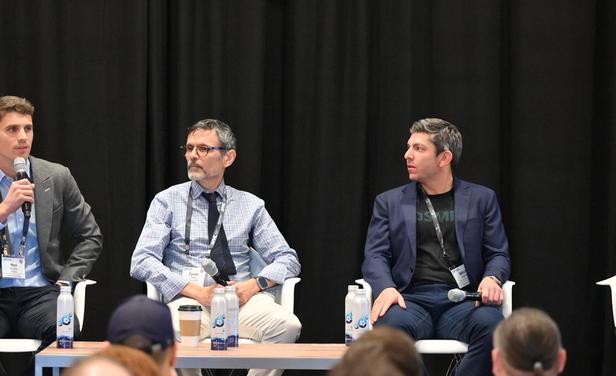

As smart home technology and property technologies become more mainstream in multifamily, the next step for operators is linking their smart devices and software to establish truly connected communities. Industry leaders, including SmartRent co-founder and current EVP of Corporate Development and Sales, Mitch Karren, sat down for the 2022 OPTECH Town Hall Connectivity and Intelligent Building Strategies to discuss everything from challenges like supply chain issues and retrofitting to the real-world value of connectivity.

Town Hall speakers, including Cyrus Claffey, ButterflyMX and Ned Murphy, Dwelo agreed new construction projects have a unique opportunity to hit the ground running on day one by selecting products and platforms that fully integrate and connect to form cohesive and comprehensive systems. The challenge is planning and coordinating all the moving parts and installation schedules to arrive at the desired result.
“With new construction, you’re going to have a ton of vendors on-site,” Karren said. “That’s just the reality; there’s not going to be one person who installs everything. You have a general contractor and they sub out to 50 subcontractors.”
Retrofitting existing properties with fully connected smart home systems is a more complicated undertaking, but one made easier by selecting a single supplier partner.
“From a retrofit perspective, I think it’s potentially more important to have one company that does all of that installation to ensure that everything is installed in the right order and at the right time,” Karren said.
“On the software side, I can’t stress enough the importance of just openness and interoperability between devices and software. Proprietary hardware and software, and I hate to say this, it’s just the enemy. If you’re not going to integrate into the leasing or maintenance workflows, are you really adding much value?”
For example, Karren said if an operator installs a smart access control system, but a maintenance technician can’t get an access code when he needs to do a work order, critical benefits of such a system are absent. During supplier selection, Karren advised operators to make sure they select hardware that all talks to each other, and most importantly integrates with the daily workflows of the leasing and maintenance staff.
On the supplier side, Karren said flexibility is essential to meeting industry demands while navigating supply chain issues and other market fluctuations. Dependency on a specific part or material can potentially halt product delivery, which makes SmartRent’s agility an asset.
“We have a very agnostic platform, so switching from one board to another board, or one part to another part, has always been in our DNA,” Karren said.
“If one supplier doesn’t have what we need, we’re adaptable and can go to someone else. That’s a key thing – not locking yourself down to one proprietary lock or one proprietary board. You have to be agnostic from a hardware perspective, so you can integrate with everyone.”
It also enables suppliers like SmartRent to shift to new manufacturers if certain regions experience shutdowns or delays. Karren said Chinese manufacturing lockdowns exposed the need for other sources, and he is encouraged by recent developments in manufacturing.

“We’re seeing a lot of movement. New facilities are popping up in Taiwan and the Philippines, Vietnam and Mexico,” he said. “That diversification of facilities is going to be really helpful moving forward. Some of the things I’m excited about is there’s a lot of new options in this space over the past couple of years. There has been a ton of money poured into proptech, in general, but especially access control and smart access. So you have a lot of options and suppliers around the world now.”